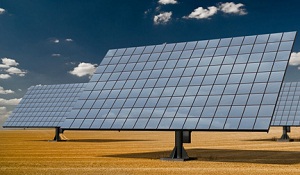Siemens trying to integrate smart grid technology in the U.S.
 In late December, German-based Siemens made Gen. Stanley A. McChyrstal (Ret.) chairman of the board for their new business entity in Washington, D.C. He joined 300 military veterans at Siemens Government Technologies.
In late December, German-based Siemens made Gen. Stanley A. McChyrstal (Ret.) chairman of the board for their new business entity in Washington, D.C. He joined 300 military veterans at Siemens Government Technologies.
It’s not rocket science. Retired military of his status understand where federal money is expected to flow. Germany makes sophisticated smart grid technology. Approximately one-third of the power in the U.S. is generated through their power generation equipment.
According to Thierry Godart, president of the U.S. Smart Grid Division at Siemens, Germany is dedicated to solving energy issues in the U.S.
“In 2010, 7,000 U.S. employees worked on more than $1 billion worth of R&D projects,” said Godart. “Most activities were driven out of Siemens Corporate Research in Princeton, N.J. Now we added other R&D efforts in Ohio, Georgia, Pennsylvania, Minnesota and California.”
The company holds over 13,000 U.S. patents. It’s likely the chairman of the new board knows where they fit. And it’s not surprising that smart grid technology is essential to the U.S. position of using drones to keep soldiers out of harm’s way.
“The military places security of supply and reliability—otherwise known as energy security—above all other needs. This need for a secure supply is necessary to support missions like piloting unmanned aerial vehicles from the United States for missions in Middle East,” said Godart.
It’s likely that McChyrstal will also focus on national security requirements for cyber security, which is critical to the military. This security concern applies to utility companies, too—as they are required to provide reliable services to customers.
According to Godart, the U.S. market potential is huge.
“There are a lot of estimates out there that go as high as billions of dollars per year,” said Godart. “We’re not worried about calculating a specific number. We know that the infrastructure (water, gas and electric) in the U.S. and Europe is aged and many assets are nearing the end of useful life. In fact, much of it already has passed its estimated life.”
For 2012, industry will be watching from the ground as the D.C. team brokers its way into contracts and funding streams.



